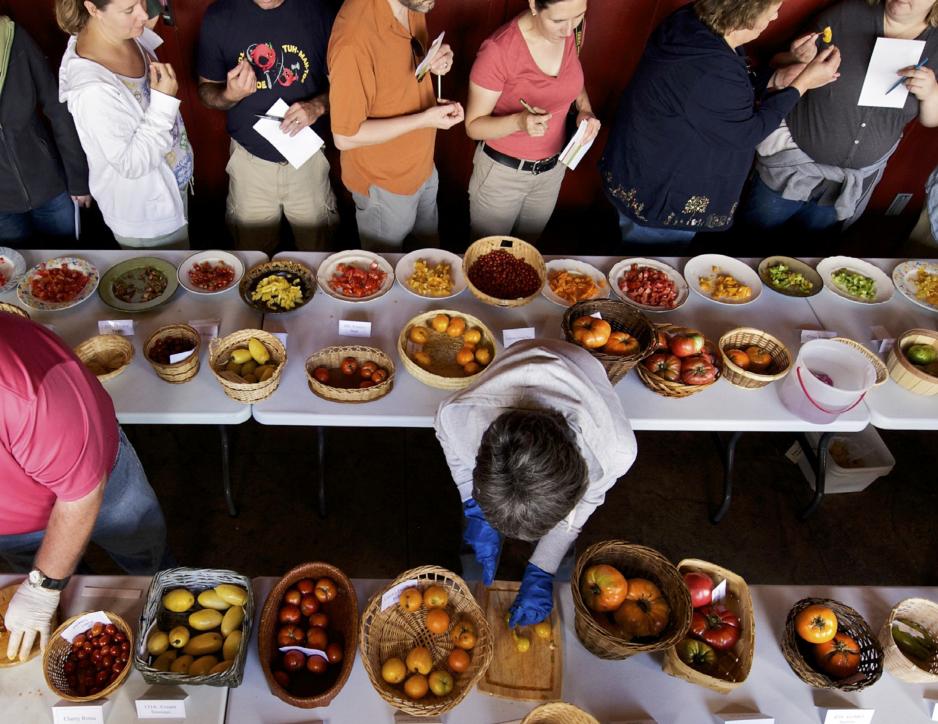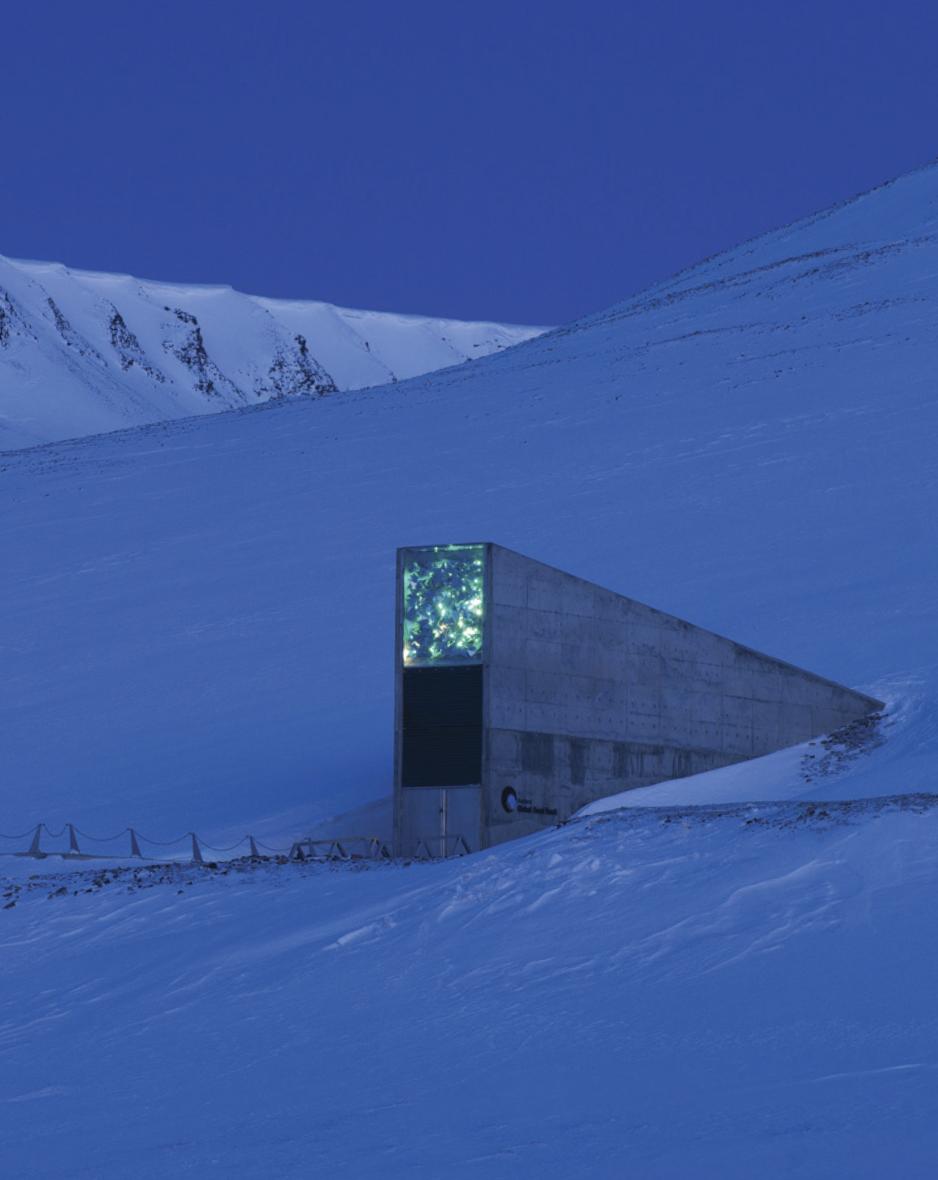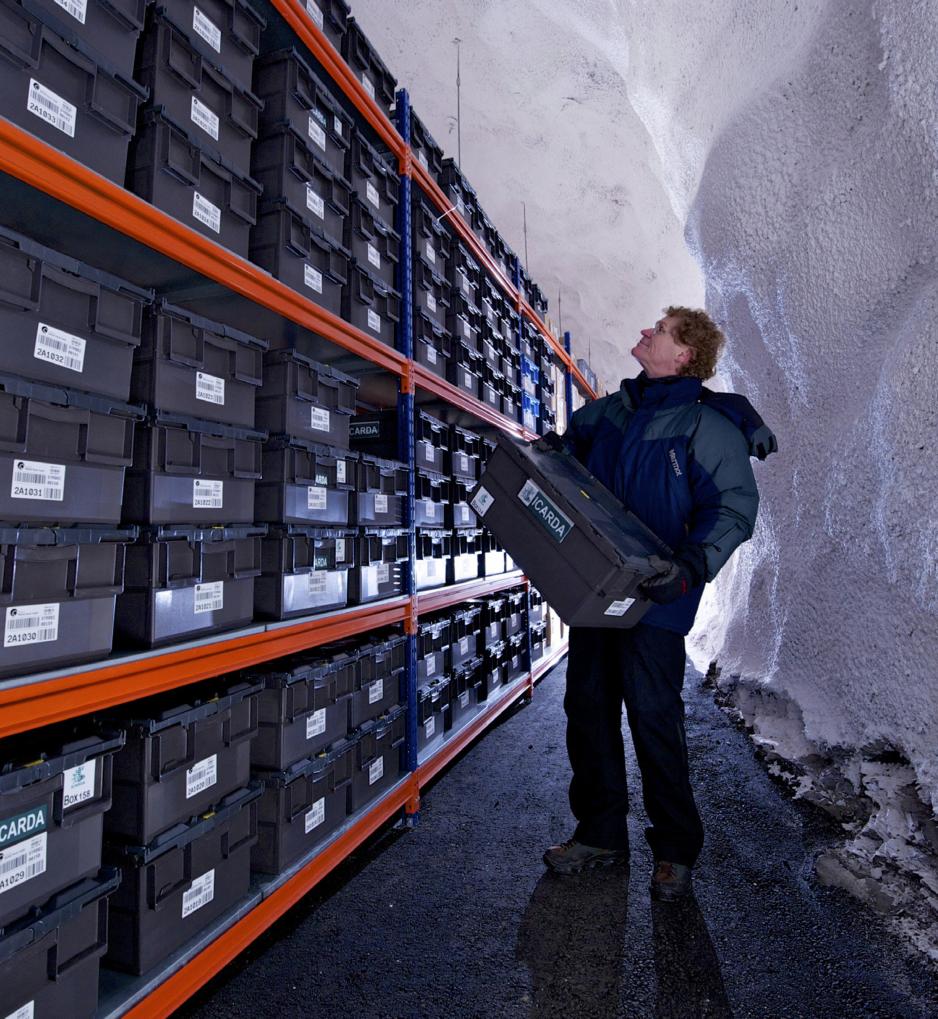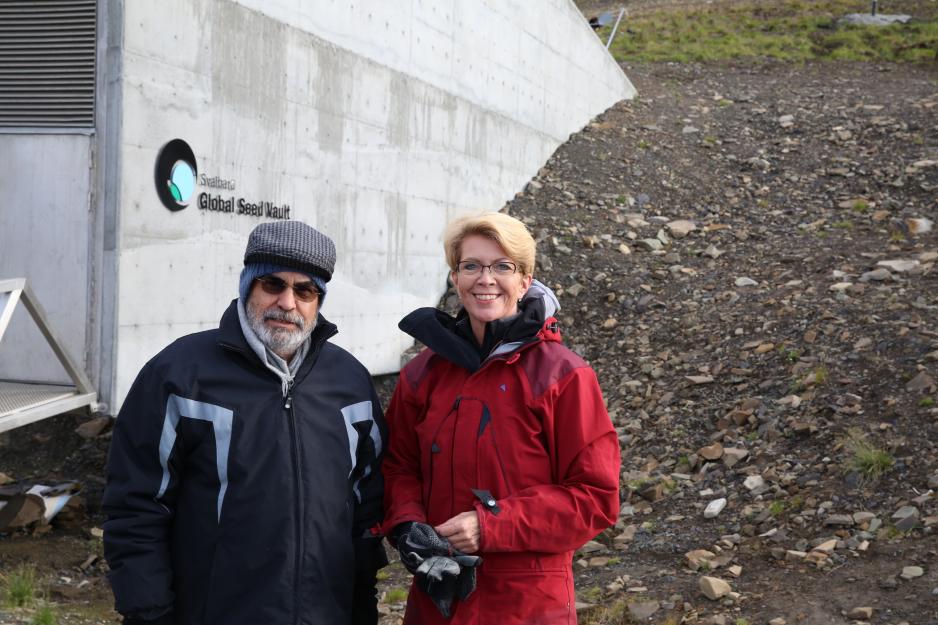"Seeds on Ice": The story of Svalbard’s Seed Vault

The most important bank in the world. A frozen Garden of Eden. The doomsday vault. Svalbard’s seed vault, where the seeds of the world are kept safe, has many nicknames.
Unique international cooperation and Norwegian leadership and generosity made it possible to create this “insurance policy for humanity”, where future generations can find the genetic material needed to secure the world’s food supply. Biodiversity advocate Cary Fowler’s new book gives us the story of how the vault came to be.
Cary Fowler has spent much of his life studying what’s gone: The millions of seeds and genetic material that have disappeared over the past century or so. Fowler, a social scientist turned biodiversity advocate, has been a key player in the efforts to make sure that future generations have access to genetic material that can help secure the world’s food production. His new book “Seeds on Ice” is a tribute not only to the Svalbard Seed Vault, but also to the people and the natural beauty around it.
“This book is a love letter to Svalbard…to the Seed Vault”, Fowler writes, and to the belief that “biodiversity….is a common heritage of all humanity”. In the words of the Washington Post, the book is “an introduction to an extraordinary, farsighted venture”. National Public Radio introduces the story of the Seed Vault as something that “may sound like the beginning of a fairy tale”. The “fairy tale” has also been introduced to an American audience through Cary Fowler’s popular TED talks, and he has been a tireless advocate for the need to preserve what future generations will need to safeguard the world’s food supply.

Natural disasters, conflicts and climate changes have renewed the urgency and actuality of Fowler’s work. His book points to the inordinate amount of biodiversity that has been lost in recent years: In 1903, there were 287 varieties of carrots and 408 kinds of tomatoes in the United States. Eighty years later, the numbers were 21 and 79. While the 1800s saw 2600 different pear varieties, we now have around 300 left. If this development continues at a similar speed, it could have grave consequences for the future of agriculture. When key genetic material is lost, it can weaken and possibly wipe out the ability to develop new plant varieties resistant to pests and drought. If one of the world’s most important crops were to succumb to new pests, resistance may be hidden in the seeds of another variety. This is why agricultural expert Sir Peter Crane in his foreword calls the Seed Vault “an insurance policy for the future of global agriculture”.
9/11 and hurricane Katrina reminded the world of the vulnerability of the regional seed banks of the world. Not only were many of the facilities in questionable shape, they were also located in areas where conflict and climate put them at risk. In 2004 Cary Fowler was appointed to head an international committee to look into the possibility of creating a central bank in Svalbard where the regional banks could store duplicate seeds for safekeeping. Fowler was prepared for skepticism:
“A room for storing seeds inside a mountain near the North Pole? Are you kidding?” But to his surprise, the Norwegian government said yes.
To Nordic researchers, the idea was not new. The Nordic genebank had stored its materials in an abandoned mine shaft in Svalbard since the 1980s. The idea of expanding the mine shaft to offer space for more of the world’s seeds had already been introduced in the 1980s. Then, the idea was abandoned due to complications such as lack of financing and controversy regarding ownership and control of genetic resources.

International seed bank officials of the world were far from convinced that an abandoned mine would be the safest place for their invaluable treasures. Their skepticism was shared by veteran mine experts in Svalbard. When Fowler and his committee first went to Longyearbyen to introduce their idea, they were told, in no uncertain terms, why this was a crazy initiative: Coal mines are dangerous places! They can cave in! Catch on fire! Explode!
Fowler was about to pack up his enthusiasm and head back to the mainland when the miners came up with a new and better plan: Build a new tunnel, away from the mines, surrounded by solid and safe rock. Fowler adjusted his proposal, and they were back in business.
In 2007, the idea had grown into a fully formed and funded plan, and the Nordic Prime Ministers gathered in Svalbard to break ground for the new Seed Vault. The nine million dollar building was funded by the Norwegian government, and NordGen, the Nordic genebank, would run the facility. A cooperation agreement with the Global Crop Diversity Trust, an endowed fund set up by FAO and CGIAR to ensure the conservation of crop diversity “in perpetuity”, would guarantee future funding to the Vault. The issue of ownership to genetic material was already solved by an international agreement guaranteeing each country ownership of their own seeds. The vault would be a treasure trove for future generations, where seeds could be kept safe for hundreds, maybe thousands of years. And the first withdrawal came sooner than expected: In 2015, Syrian gene bank ICARDA could turn to Svalbard to find duplicates of seeds lost in the chaos of war.

Norwegian Åslaug Marie Haga has been executive director of the Global Crop Diversity Trust since 2013. She praises Fowler’s book:
- “Seeds on Ice” provides an excellent starting point for the discussion on biogenetic diversity, our most important natural resource, she says.
- But the Seed Vault is not the most important facility in our day-to-day efforts to secure future food production – the regional plant banks are. That is where farmers and researchers get what they need. However, the Seed Vault is key as back-up. It also provides a terrific platform for information, and it is a unique resource in putting this topic on the agenda, Haga says.
Today, close to a million seed packages from all corners of the world are safely stored behind frozen doors in the mountain above Longyearbyen airport.
The international collaboration that led to the birth of the Seed Vault has been widely praised, and, as is often the case when a project is successful, there is no lack of people who claim parental responsibility. Whether Cary Fowler was as instrumental as his book indicates is a question we will not address here. But there can be no doubt that his influence and efforts were crucial for the Seed Vault to become reality. This book opens the door not only to the Vault, but to a process that shows Norwegian leadership and international cooperation at its best. Beautifully accompanied by photographers Mari Tefre and Jim Richardson’s northern images, this book is a tribute to the Seed Vault, its unique history, and the nature and people of Svalbard. Read this book, and you will know why this is the most important bank vault of all.
